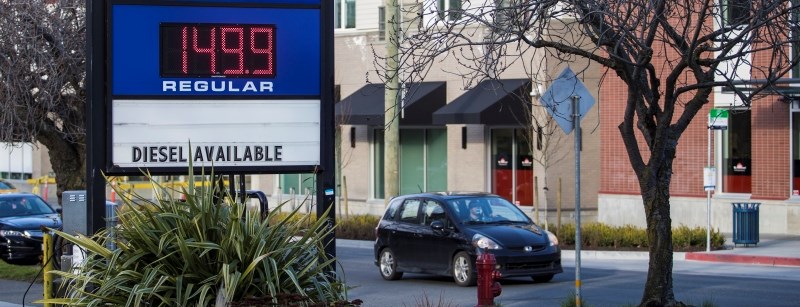Gasoline prices have jumped again in Greater Victoria, something that regularly occurs when the daffodils bloom. Why does this keep happening? When will it end?
The near-record gas prices you are seeing correspond to the annual shutdown of Burnaby’s Parkland refinery, the refinery that produces half of the region’s gasoline. Every year the refinery shuts down for maintenance and a switchover to producing a blend of gasoline for the warmer months ahead.
Prices can spike by as much as 20 cents per litre during the planned six-week shutdown.
This year the situation was exacerbated because the Olympic pipeline, responsible for distributing gas throughout Washington and Oregon, was taken offline for five days.
This is relevant because we generally turn to our American cousins to make up for the seasonal shortage.
But the near-record prices on the Lower Mainland and Vancouver Island are a symptom of a chronic supply shortage that hasn’t been addressed, said Dan McTeague, senior petroleum analyst with online tech company GasBuddy.
“It comes down to the economics of scarcity and supply,” said McTeague.
He said that the supply, or lack thereof, of fuel has led to the region consistently reporting the highest gas prices in North America.
Although drivers in Vancouver can expect some relief in prices in the next few days, prices in Greater Victoria might stay high, he said.
Starting April 1, Greater Victoria drivers will be hit with a two cent per litre tax increase to fund transit improvements. The change brings the total gas tax to five cents per litre, and is expected to raise about $7 million a year. This will be the first time the tax has gone up in a decade.
But that’s not all.
British Columbia’s version of the carbon tax will go up by $5 on April 1, to $35 a tonne. That will translate to an increase of about 1.2 cents per litre to the price of gas and diesel.
“It’s a death by 1,000 cuts,” said McTeague, who tracks petroleum trends across the country.
He predicts $1.60 per litre is possible this summer.
The only way to avoid these seasonal swings is to improve supply, he said.
Half of the gasoline to fill vehicle tanks comes from Alberta, 25 per cent from the Burnaby Parkland refinery and the rest from refineries in Washington state.
Due to environmental concerns, building a new refinery in this province to alleviate the shortage is a non-starter.
“Alberta, on the other hand, has the refineries and the capacity to send a lot more refined gas to the coast,” McTeague said.
That’s the premise behind the twinning of the controversial Kinder Morgan Trans Mountain pipeline.
“A twinned pipeline is the only viable option — and it could drop local gas prices dramatically,” he said.
It doesn’t help that B.C. and Alberta are engaged in a political spat over the pipeline, with the Alberta premier threatening to turn off the taps. “If that happens, get prepared for prices of more than $2 a litre — as a starting point,” McTeague said.
The average price for a litre of regular gasoline remained at $1.499 in the capital region on Friday — the highest level in a decade — after a jump of nine cents on Thursday.
Prices hit a record high of $1.536 in the summer of 2008, according to GasBuddy.



